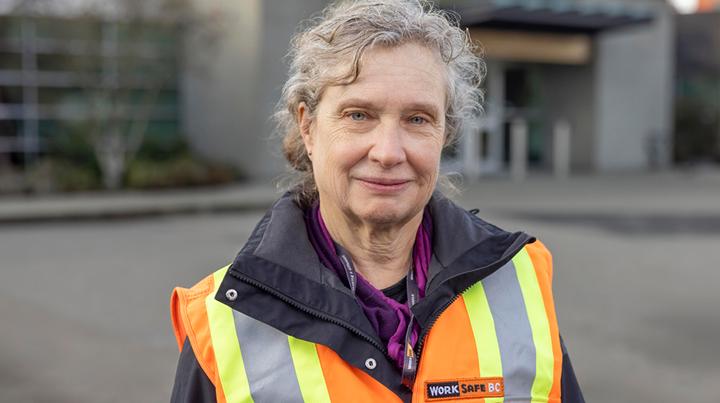Ask an officer: Controlling the risk of welding fume exposures
WorkSafeBC has released updated OHS guidelines and a new guide, Controlling Exposure Risks from Cutting and Welding Processes, to provide key information about safely controlling welding fume exposures to prevent serious illness and disease.
The guide will help the welding industry understand the health risks and provide guidance on how to manage them. We spoke with senior occupational hygienist Jeanette Campbell about how this resource can be used to make welding work safer.
Jeanette Campbell
Senior occupational hygienist, Vancouver/Richmond
Years on the job: 36
Who should use this resource and how will it help them?
The guide will help employers and workers understand the health risks of exposure to airborne welding fumes and provide guidance on how to manage these risks. It can also provide information for qualified persons conducting hazard assessments for welding activities in confined spaces.
What are the risks of exposure to airborne welding fumes and gases?
Welders and others nearby are at risk of developing occupational diseases and illnesses, including associated short- and long-term health effects. The International Agency for Research on Cancer (IARC) has classified both welding fumes and the UV radiation from welding as carcinogens.
Welding fume contains many substances — some of which have very low exposure limits and are carcinogenic, sensitizers, and/or reproductive toxins. Exposure to these designated substances in welding fume must be kept as low as reasonably achievable (ALARA) below their exposure limits.
The health effects depend on the contaminants that workers are exposed to and how high their exposures are. Short-term effects can include metal fume fever (a flu-like condition), irritation of eyes, nose, and throat, and risk of asphyxiation, while long-term effects can include neurotoxicity, occupational asthma, cancer, and chronic obstructive pulmonary disease.
What are the three basic types of risk controls for welding fumes and gases?
The best way to reduce the risk of exposure to welding fumes and gases is to eliminate the source of exposure. If that’s not possible, the other three types of risk controls, following the hierarchy of controls, are engineering controls, administrative controls, and personal protective equipment.
What is an effective engineering control to reduce the risk from common welding processes?
Local exhaust ventilation (LEV) systems that capture and remove the hazardous fumes and gases are typically the best engineering control. If the welder or another worker’s breathing zone is in the welding fume, then it isn’t effective.
Mechanical dilution ventilation can be an additional control to help prevent the buildup of welding fume. These systems may be effective for welding processes that generate small amounts of fume in relatively large work areas with high ceilings. They can also help to control workers’ exposures in adjacent areas.
It’s important that workers are trained in how to use these controls, and procedures need to be in place to ensure the controls are used effectively and maintained. Training and written procedures are two examples of administrative controls.
What types of effective ventilation are needed when welding indoors?
There are several types of LEV systems that can be used indoors, including those that use moveable capturing hoods, on-torch extraction, or extracted welding booths and benches. In most situations, natural ventilation is not an effective control. Except for short tasks where welding fume doesn’t accumulate in the worker’s breathing zone, LEV and/or respiratory protection will be required. Many outdoor welding tasks will also require the use of local exhaust ventilation or respiratory protection.
What respiratory protection should workers wear?
The type of respiratory protection depends on the type and concentration of contaminants present. If LEV isn’t practical or is only partially effective, a minimum of a half-face respirator is required. For welding applications that require a higher level of control, full-face respirators or powered air purifying respirators will be required. Refer to Breathe Safer and the Occupational Health and Safety Regulation (including sections 8.32 and 12.124) for additional information about respirator requirements.
Where can I get more information?
Download the guide Controlling Exposure Risks from Cutting and Welding Processes, from our website. You’ll also find more resources on the Welding gases & fumes webpage.
This information originally appeared in the Spring 2024 issue of WorkSafe Magazine. To read more or to subscribe, visit WorkSafe Magazine.

